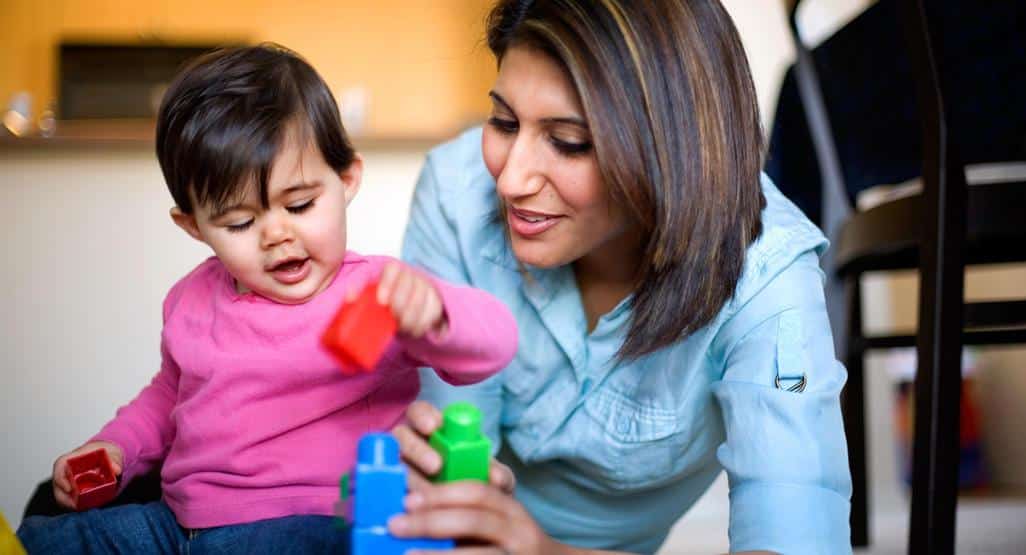
The midnight dance of rocking a crying baby can make even the most patient parent question their sanity. You’ve read all the books, downloaded the apps, and timed those wake windows perfectly—yet sleep remains frustratingly elusive.
Sleep training struggles aren’t just about technique; they’re about your child’s unique blueprint meeting the reality of your home.
When conventional methods fail, it’s not you who’s failing—it’s simply time to customize your approach.
Did you know Babies spend about 50% of their sleep in REM (active sleep), compared to adults’ 20%—making them much more likely to wake during lighter sleep phases!
The trip to restful nights isn’t a straight line but rather a winding path unique to your family. Let’s explore why your current methods might be failing and find what might actually work for your child.
What Is Sleep Training?
Sleep training helps infants develop healthy sleep habits by teaching them to self-soothe and fall asleep independently. It typically addresses challenges like frequent night-wakings or difficulty falling asleep without parental assistance.
Common methods include the:
- Ferber method (progressive waiting)
- Cry It Out (minimal intervention)
- The chair method (gradual withdrawal)
- No-tear method (gentle, responsive techniques)
Each method varies in parental involvement and comfort with crying. Most parents consider sleep training between 4 and 6 months, when babies no longer require night feedings and can physiologically sleep longer stretches.
This timing aligns with the developmental readiness for self-soothing skills. Sleep training remains a personal choice based on family values, parenting philosophy, and the child’s
temperament. Success often depends on consistency, establishing bedtime routines, and creating a sleep-conducive environment rather than rigidly following a single method.
Why Sleep Training Might Not Be Working?

Sleep training challenges often stem from inconsistent bedtime routines. When parents vary the timing or sequence of pre-sleep activities, children struggle to recognize sleep cues, leading to resistance at bedtime.
Age and temperament misalignment can derail even well-structured sleep plans.
Some children naturally require more parental reassurance, while others need different approaches based on developmental stages.
Disruptions like teething pain, illness, or developmental regressions frequently sabotage progress. These temporary setbacks can frustrate parents who don’t recognize them as normal phases, requiring patience.
Undiagnosed medical conditions might be the hidden culprit behind persistent sleep difficulties. Sleep apnea, reflux, or sensory processing issues can prevent children from settling comfortably despite proper sleep hygiene practices.
Understanding these potential roadblocks allows parents to adapt their approach compassionately, recognizing that successful sleep training requires flexibility and attunement to their unique child.
How Long Does Sleep Training Usually Take?
Most sleep training methods take 3-14 days to show significant improvement, though every baby responds differently.
The first 3-4 nights are typically the most challenging. Many parents see noticeable progress by nights 5-7, with consistent improvement thereafter.
Factors affecting timeline include:
- The baby’s age and temperament
- Consistency in your approach
- Which method you choose (gentle methods may take longer)
- Whether you’re addressing naps and night sleep simultaneously
Expect occasional setbacks during developmental leaps, teething, or illness. A brief refresher training usually restores progress quickly.
Remember that sleep training teaches a skill – learning to fall asleep independently – rather than forcing a specific schedule. Be patient and consistent for the best results.
Common Mistakes Parents Make During Sleep Training
Sleep training can be challenging, yet consistency is key. Parents often switch techniques too quickly when they don’t see immediate results, not giving methods the necessary time to work.
Many households create overstimulating bedtime environments with bright lights, screens, or energetic play just before sleep. This makes it difficult for children to wind down naturally.
Mixed messages during night-wakings confuse children about expectations. When parents sometimes rock back to sleep but other times encourage self-soothing, children struggle to understand the consistent pattern they should follow.
Inconsistency between caregivers is another significant obstacle, with different approaches from each parent creating confusion for the child.
Not accounting for developmental leaps or sleep regressions often leads parents to abandon effective methods at precisely the wrong time.
Signs Your Sleep Training Method Needs Adjusting

Sleep training can be challenging, and it’s crucial to recognize when your approach isn’t working. If you’ve seen little to no improvement in your child’s sleep patterns after consistently following a method for 7-10 days, it may be time to reassess.
When your child’s distress increases rather than decreases during training sessions, their crying becomes more intense, or they develop new sleep resistances, your current method might be misaligned with their temperament.
Inconsistent sleep patterns despite following the routine—such as waking at unpredictable times or taking shorter naps—often signal a need for adjustment.
Parental burnout is equally important to monitor.
If you’re experiencing increased anxiety around bedtime, doubting your decisions, or feeling emotionally drained, your approach may be unsustainable for your family.
Most common sign: Your child develops new sleep associations that make the situation worse than before.
When to Pause or Change Your Approach?

Parenting requires constant adaptation as children grow and develop at their own unique pace. Knowing when to shift strategies can transform challenging moments into opportunities for connection and growth.
1. How to Recognize It’s Time for A Break?
Watch for signs of frustration in both yourself and your child. Tears, raised voices, or physical tension often indicate that everyone needs space to reset.
Trust your parental instinct when interactions feel forced or counterproductive. A short break can prevent small challenges from escalating into major conflicts.
Remember that learning happens in cycles, not continuous streams. Children absorb information in bursts, with natural periods of resistance in between.
2. Adjusting to A Gentler or Alternative Method
When traditional approaches aren’t working, consider your child’s learning style. Visual learners might need diagrams, while kinesthetic learners thrive with hands-on activities.
Meet your child where they are, not where you expected them to be. Adapting to their current emotional and developmental needs often opens unexpected progress.
Flexibility is key – sometimes, the breakthrough comes from turning the lesson into a game or taking it outdoors for a change of scenery.
3. Understanding Your Child’s Specific Needs and Cues
Observe patterns in successful learning moments versus difficult ones. Your child provides valuable feedback through their engagement level and emotional responses.
Create an ongoing dialogue about what helps them learn best. Even young children can express preferences when given simple choices between different approaches.
Pay attention to time-of-day patterns. Many children have optimal learning windows when they’re naturally more receptive and focused.
Tips to Improve Your Sleep Training Success!
Sleep training can be challenging, but with the right approach, you can help your little one develop healthy sleep habits.
Consistency is key—establish a calming bedtime routine that signals it’s time to wind down. This might include a warm bath, storytime, or gentle lullabies.
Your baby’s sleep environment matters tremendously. Keep the room comfortably cool (around 68-72°F), minimize noise with white noise machines if necessary, and ensure the room is dark with blackout curtains.
A well-optimized sleep space dramatically improves sleep training outcomes.
Patience truly is a virtue during sleep training. Watch for your baby’s sleep cues—yawning, eye rubbing, or fussiness—to catch the ideal window before overtiredness sets in.
Each baby responds differently to training methods, so be flexible.
Special tip: Alternate sleep training responsibilities with your partner to maintain your rest and mental well-being.
When to Seek Professional Help?
While occasional sleep troubles are normal, persistent issues warrant professional attention.
If your child’s sleep problems last more than a few weeks despite consistent routines, it’s time to consult a specialist.
Be particularly alert for signs of underlying health concerns. Symptoms like loud snoring, breathing pauses, excessive daytime sleepiness, or unusual sleep positions could indicate conditions requiring medical intervention.
Pediatricians should be your first resource when sleep issues arise. They can rule out medical causes and provide age-appropriate guidance or refer you to specialists if needed.
For behavioral sleep challenges, certified sleep consultants offer personalized strategies customized to your family’s needs.
These professionals bring expertise in evidence-based approaches that respect your parenting philosophy while addressing your child’s specific sleep obstacles.
Remember, seeking help isn’t a sign of failure—it’s a proactive step toward better sleep for your entire family.
Summing It Up
When sleep training methods aren’t yielding results, parents often feel defeated and exhausted. This isn’t a reflection of your parenting abilities—it’s simply a signal that your current approach needs adjustment.
Remember that each child is unique and requires a personalized sleep strategy. What works for one family may not work for yours, and that’s perfectly normal.
The sleep training trip rarely follows a straight path. There will be setbacks and challenging nights, but these don’t indicate failure.
Take a step back to reassess your child’s developmental stage, temperament, and sleep environment. Sometimes, small tweaks can lead to significant breakthroughs.
Above all, be gentle with yourself. Parenting is inherently difficult, and sleep challenges are universal. With persistence, patience, and self-compassion, you’ll find the approach that works for your family.
If you’re interested in more informational content on mothers and babies, feel free toclick here and explore other blogs that you might enjoy.
